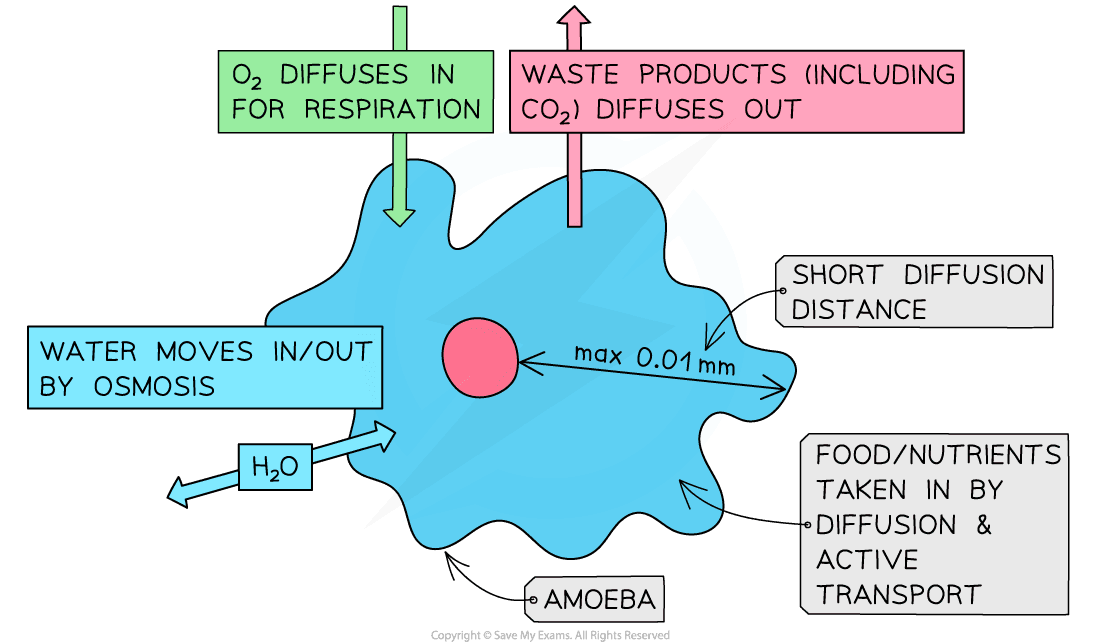The Need for Transport
- In order for any organism to function properly, it needs to exchange substances between itself and the environment such as:
- Oxygen
- Carbon dioxide
- Water
- Dissolved food molecules
- Mineral ions
- Urea
- This exchange of substances occurs across the cell membrane
- There are three transport processes that living organisms use for exchange: diffusion, osmosis and active transport
- Unicellular (single-celled) organisms like amoeba have very large surface areas (SA) in comparison to their volumes
- This means that the distance between the surface of the organism to its centre is very small
- As a result, unicellular organisms do not need to have specialist exchange surfaces or transport systems; as diffusion, osmosis and active transport through the cell membrane occur at a sufficient rate to meet the needs of the organism

Unicellular organisms such as amoeba do not require transport systems due to their large surface area to volume ratio
Multicellular organisms
- For larger, multicellular organisms the distance between the surface of the organism to its centre is relatively long
- This is why larger organisms usually have exchange surfaces and transport systems; as diffusion, osmosis and active transport cannot happen sufficiently to meet a larger organism’s needs otherwise
- Transport systems in animals include:
- The blood and circulatory system – carries the necessary substances around the body
- Transport systems in plants include:
- The xylem – moves water and mineral ions from roots to shoots
- The phloem – moves sugars and amino acids to where they are needed in the plant

Some examples of transport systems in plants and animals
The Need for Exchange Surfaces
- Large, multicellular organisms like humans have relatively small surface areas (SA) in comparison to their volumes
- This is why larger organisms need exchange surfaces within their transport systems to carry out diffusion, osmosis and active transport at a sufficient rate
- Exchange surfaces in animals include:
- The lungs and alveoli for gas exchange
- The small intestines and villi for absorption of digested food
- Exchange surfaces in plants include:
- Roots and root hairs where mineral ions and water are absorbed
- The leaves for gas exchange
Some examples of exchange surfaces in plants and animals
Properties of exchange surfaces
- Multicellular organisms have surfaces and organ systems that maximise the exchange of materials by increasing the efficiency of exchange in a number of ways:
- Having a large surface area to increase the rate of transport
- A barrier that is as thin as possible to separate two regions, to provide as short a diffusion path as possible for substances to move across
- In addition, animals have:
- A large network of blood vessels throughout the body:
- To reduce the distance of exchange of materials between cells and the bloodstream
- To move substances towards or away from exchange surfaces to maintain concentration gradients
- Gas exchange surfaces that are well ventilated to maintain concentration gradients
- A large network of blood vessels throughout the body:
- You should be able to calculate and compare surface area to volume ratios
- You can model the effect of how increasing size affects surface area to volume ratio using simple cubes:
Calculating the surface area to volume ratio



